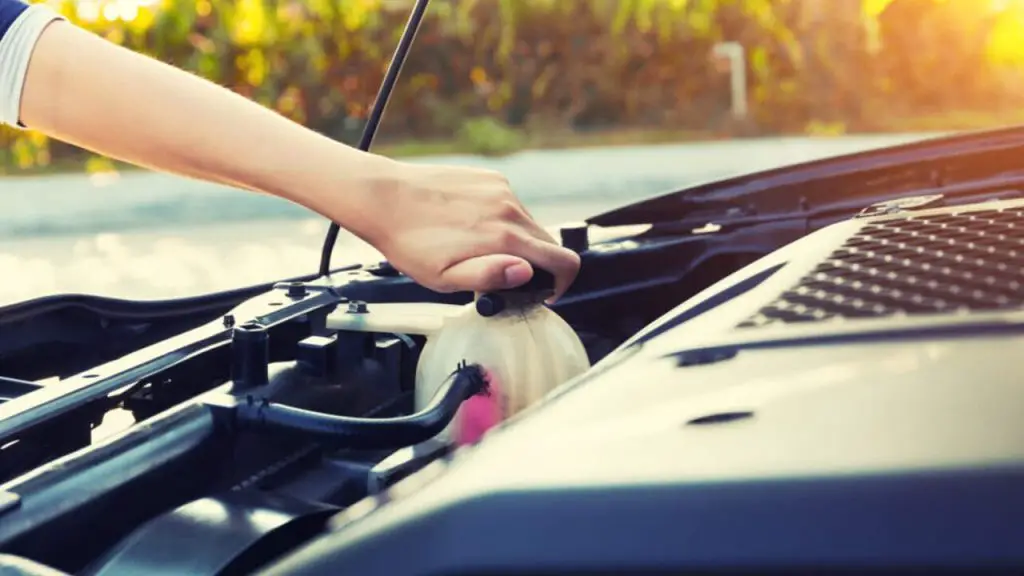Coolant and water are both crucial fluids in your car’s cooling system, but you must never combine them. Mixing coolant and water can be extremely dangerous to your engine. The outcome is corrosion, which means that both the coolant and water are being broken down instead of helping to keep your engine safe and sound.
If you accidentally mix these fluids, or if you add the wrong type of fluid from a bottle labeled as coolant, it’s essential that you take action quickly. In this blog post, we explain what happens if you mix water and coolant, why it happens, how to identify whether you have done it yourself, and what to do about it in order to prevent further damage.

What is coolant?
Coolants help keep your engine operating within a safe temperature range, preventing damage and premature wear. Ethylene glycol and propylene are the most common types of coolants, they can also come in colors like green, blue, or pink. Additives in the coolant help to protect your engine against corrosion and wear.
This fluid circulates through your car’s engine and acts as an agent to lower the temperature of the engine, preventing it from overheating. While preventing corrosion in your engine coolant also acts as a lubricant between moving parts. The color of your car’s coolant will usually indicate the type of anti-freeze that has been added to it.
If you have a green-colored coolant in your engine, it likely contains silicate or silicate-free additives. When silicate is present, this helps to prevent corrosion in your engine and is found in antifreeze, marine coolants, and some automotive coolants.
What Happens If You Mix Water and Coolant And Why It Happens
Water and coolant are both hygroscopic, which means that they attract and hold moisture. While this might sound like a good thing, water and coolant are not a good combination. When water is inside the engine, it is broken down by the corrosion process of electrolysis. When electrolysis takes place, an electrical charge is applied to the water molecules.
This action separates the water molecules into hydrogen and oxygen. The oxygen creates a layer of rust on metal components, while the hydrogen bubbles to the surface and collects in the coolant reservoir.
When this happens, the coolant will begin to bubble and become frothy, which means that it is no longer able to lower the temperature of the engine. Instead, it will begin to break down and create a layer of corrosion inside your engine.
How can you tell if you’ve accidentally mixed fluids?
The warning signs that you have accidentally mixed water with your coolant include:
Bubbling: if you have a green or blue coolant, and it suddenly bubbles up and turns into a frothy white substance, this is an obvious sign that it has broken down and is no longer working.
Rust: if the bubbles are orange or brown in color, this is likely to be rust and means that the corrosion process has already taken place.
Engine temperature: if your engine temperature is rising quickly and your car is overheating, this could be a sign that your coolant has broken down and is no longer working as it should.
Prevention tips to avoid accidentally mixing water and coolant in your car engine
The cooling system in your car is critical for preventing your engine from overheating. The system is filled with a mixture of water and coolant, which helps to transfer heat away from the engine. If the coolant level runs low, it can be tempting to top it up with water. However, this can cause problems down the line.
Water has a lower boiling point than coolant, which means that it is more likely to vaporize inside the engine. This can lead to corrosion and damage to engine parts. In addition, the water will not be able to transfer heat as effectively as coolant, which could lead to your engine overheating.
For these reasons, it is important to check the level of coolant in your car regularly, and top up with the correct mixture if necessary. Never add water to the system without also adding coolant.
What to do if you’ve mixed fluids by accident?
If you have accidentally mixed water with your coolant, it’s important to act quickly. If the engine temperature is normal, you can drive the car to a repair shop and have them remove the broken-down coolant. With the engine off, you should also drain the reservoir and replace it with the correct coolant.
If the engine is overheating, you should first park the car in a safe place where it will not be a hazard to other road users. Next, you should turn off the engine and open the hood to let the heat out of the engine bay.
Finally, you should replace the broken-down coolant with the correct type of coolant and drive the car to a repair shop as soon as possible to prevent further damage.
Conclusion
Coolant and water are both important fluids in your car’s cooling system, but you must never mix them. When water and coolant are mixed together, electrolysis takes place, separating the water molecules into hydrogen and oxygen. This action creates a layer of rust on metal components and bubbles to the surface of the coolant.
This means that the coolant has broken down and is no longer able to lower the temperature of the engine. If you have accidentally mixed water with your coolant, it’s important to act quickly.
Additional Contents:

